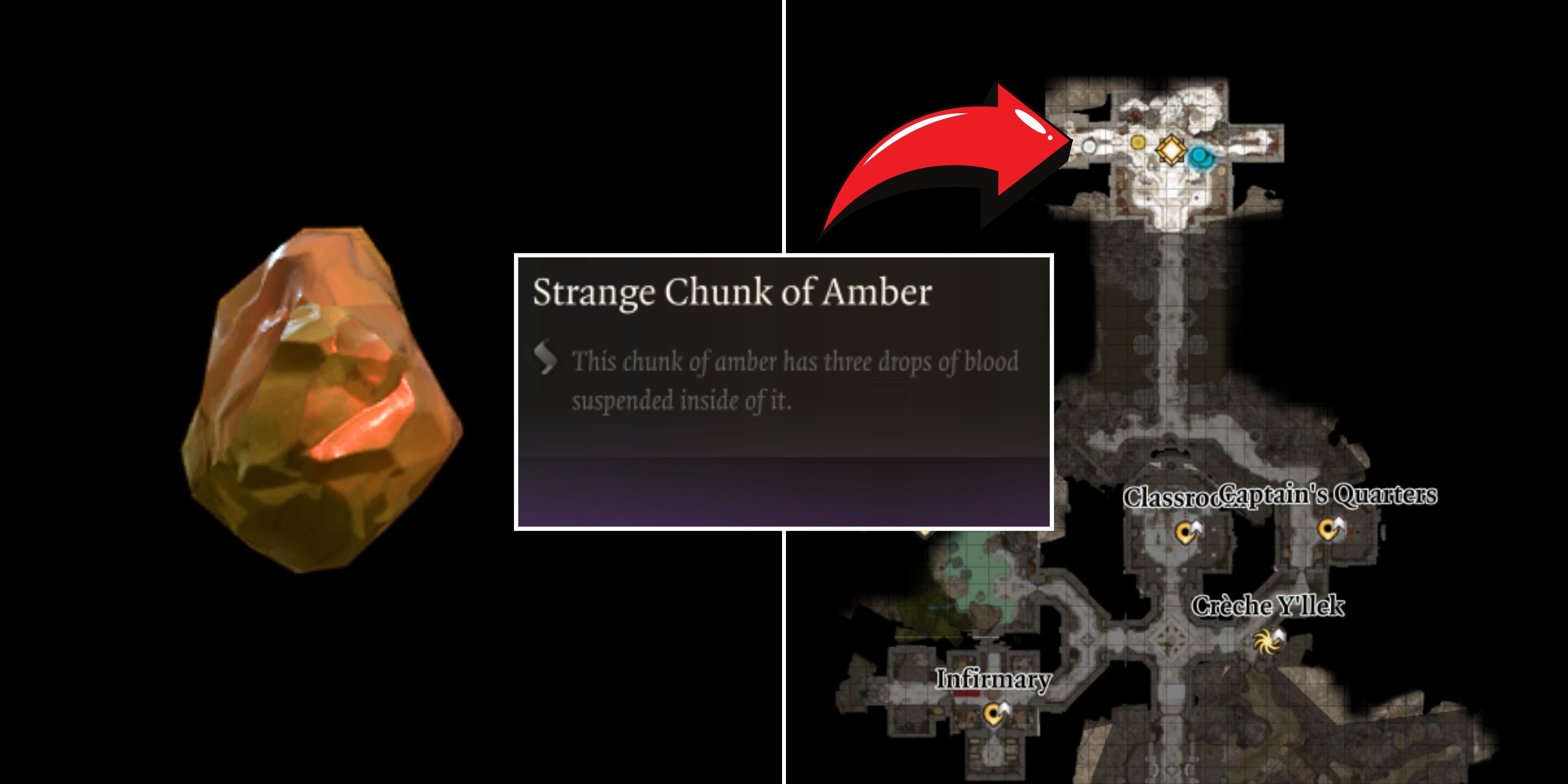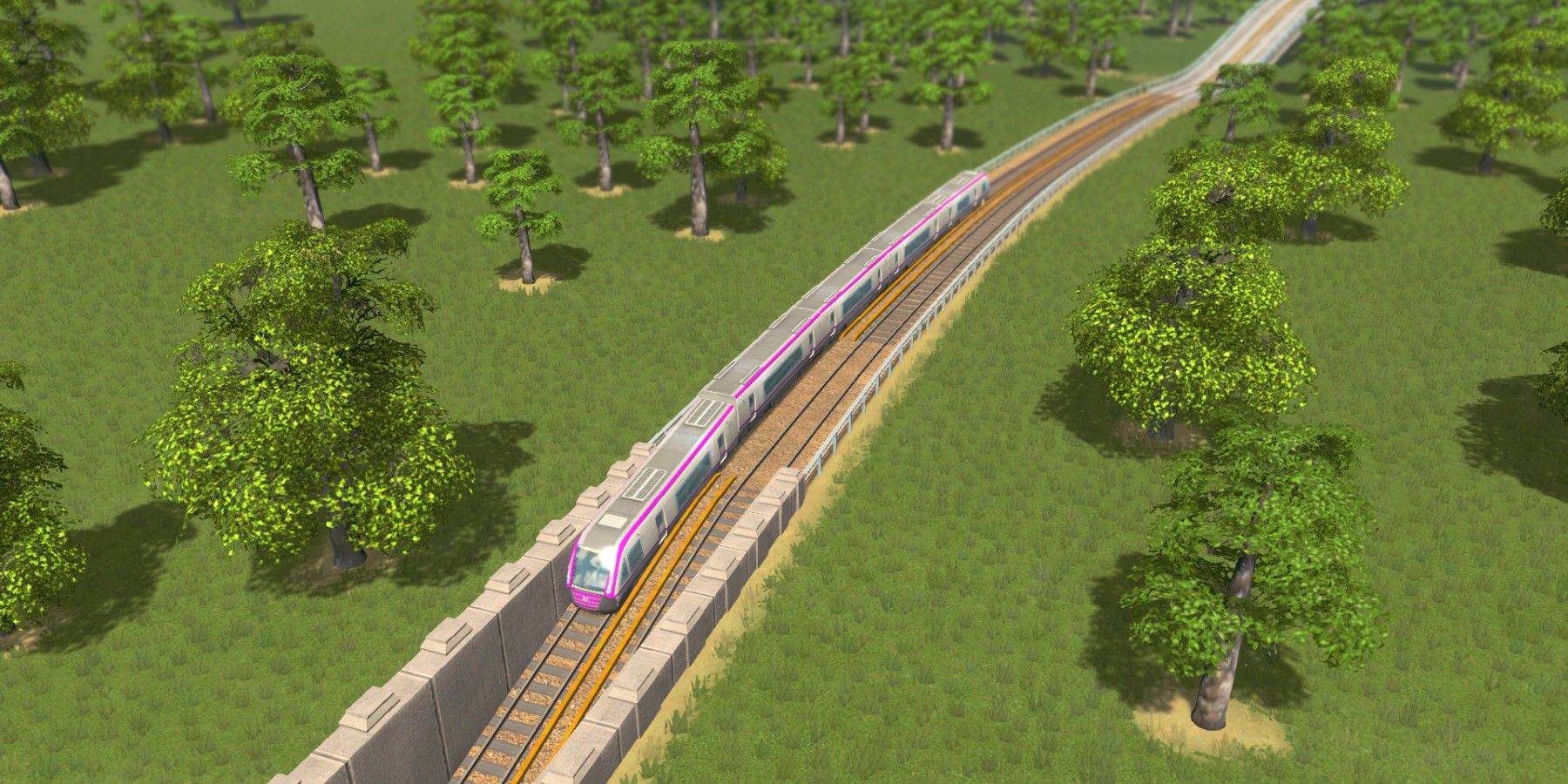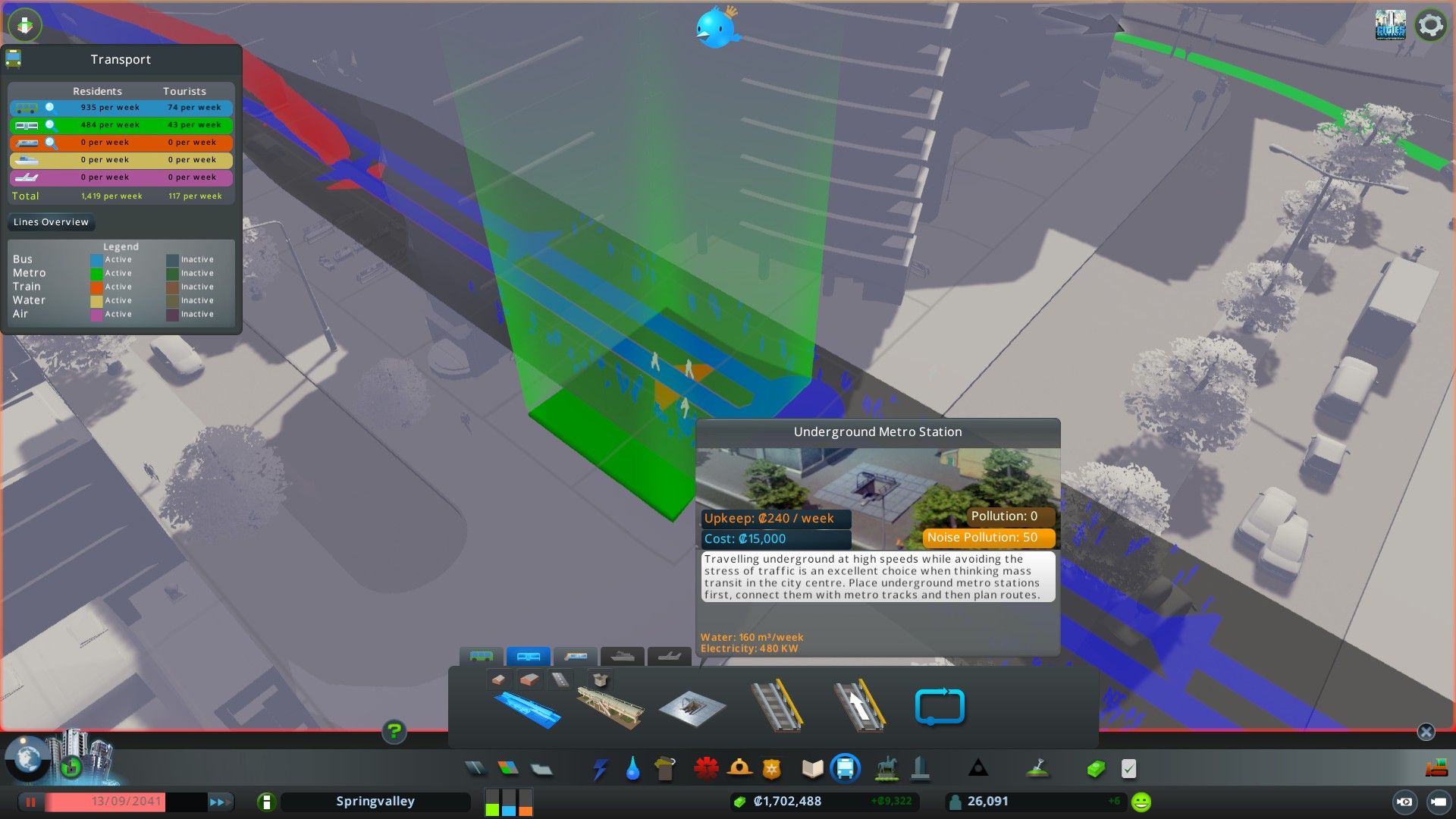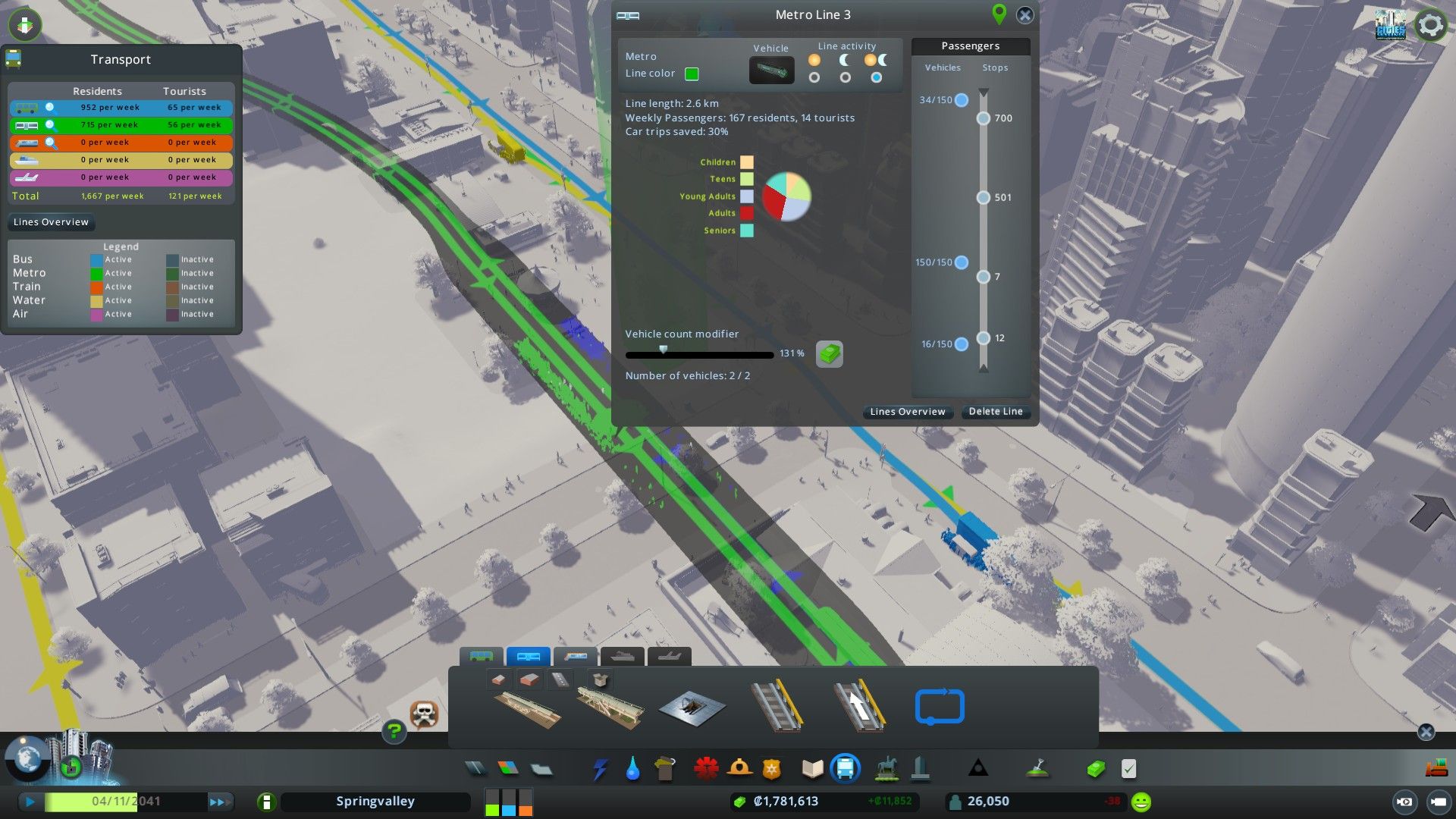When players reach the Big Town milestone in Cities: Skylines, they get access to a new form of public transportation: the metro. This is a passenger train that can travel along the surface, go underground as a subway, or climb above the ground as an elevated railway. Metro tracks don't connect to the railroads that go past the edges of the map, but they can connect between different levels.
Of course, the best option for most cities is the underground metro. This lets players overlap the metro infrastructure with existing streets and buildings, so metro stations can fit in convenient locations without having to completely redo the road network. However, setting up a metro system can be tricky for players who don't fully understand the new parts of the Cities: Skylines interface.
Building the First Metro Line
First, players should go to the Transport option along the bottom of the interface. The first tab of this menu is for buses, but the second one has all the metro parts.
Players can choose between three station types: on the surface, elevated, or underground. The surface-level station is the cheapest, and the elevated station is the most expensive. The elevated station also takes up just as much space as the surface station, so players should avoid building them and only elevate the metro tracks when needed.
For its part, the underground metro station takes up much less space on the surface. However, it still generates the same noise pollution as the other two stations, so players should be careful about where they place them. In all three cases, the metro station must be placed next to a road.
After placing the first station, place another one at the desired destination. Keep the station's orientation in mind, because while the surface entrance is a square the underground station is very long and narrow.
Next, create a metro track that connects the two stations. The track starts on the surface level by default, but players can use the same controls that raise and lower roads to raise and lower the metro track. On the PC, this defaults to Page Up and Page Down. Metro tracks can't take sharp corners the way roads can, but the game automatically rounds the edges of tracks even when using the straight track option.
One other thing players should keep in mind is how expensive underground tracks are. A two-way track on the surface costs 80 per cell, but the same length underground is 380 and an elevated line is just 200. Be prepared to spend a lot of money when building a subway.
The last step to building an underground metro line is to create a route. This works the same way as creating a bus route, and it starts by clicking the Metro Line Tool in the construction menu. With the tool active, players can click on a metro station to create a new line, click on a second station to add a stop, and then click on the first station to finish the circuit.
Advanced Metro Tips
- Just like bus lines, players can check individual metro lines for the number of passengers waiting, how many car trips they're preventing, and how many vehicles are on the line. Players can also swap the train type, but only if they have a DLC or mod that adds new options.
- Also like buses, players can color each line to make them stand out.
- Unlike buses, metro lines don't need a train depot to create new trains. Simply create a line and trains will spawn in to run them.
- More trains will move passengers faster, but they'll also block the tracks if there are too many of them. This is especially important when creating new lines that share stations.
- The one-way metro track costs a bit less than the two-way track, and trains can go both directions on it, but they can't pass each other. The only time to use one-way tracks is on isolated one-train lines that don't get a lot of passengers.
- Because of the high cost, players should transition from subway tunnels to surface or elevated tracks when away from built-up areas.
- Passengers using public transportation can connect between buses, metros, trains, and planes, so creating bus stops next to metro stations and airports can help cut down on car usage.
Cities: Skylines is available now on PC, PS4, Switch, and Xbox One, and it's coming to PS5 and Xbox Series X/S on February 15.






